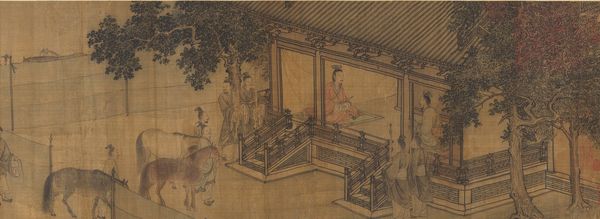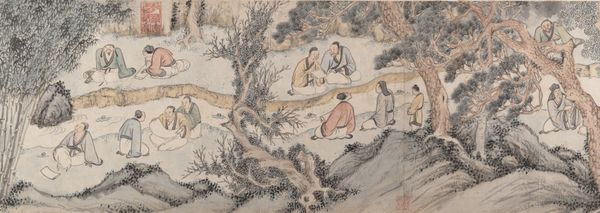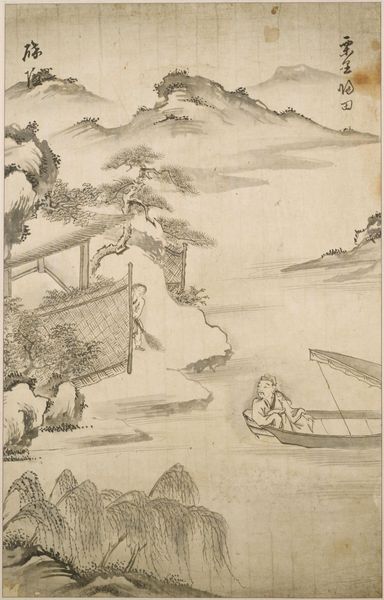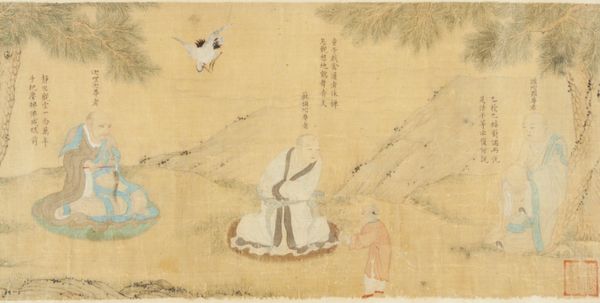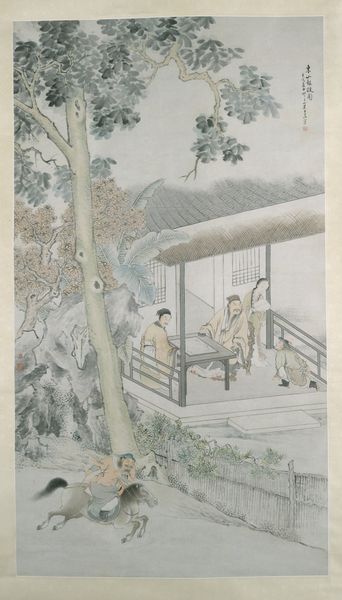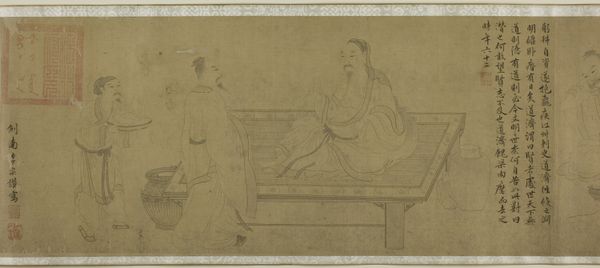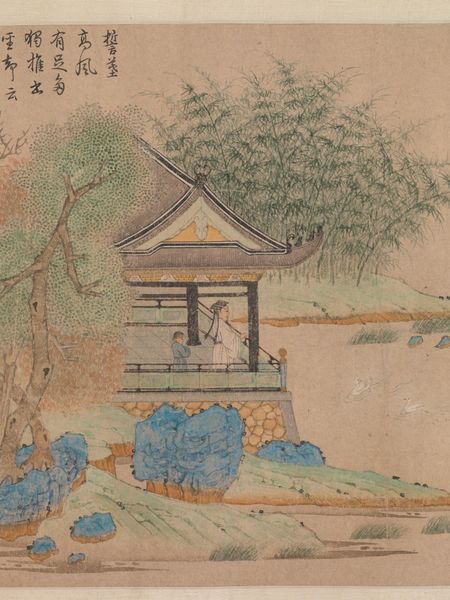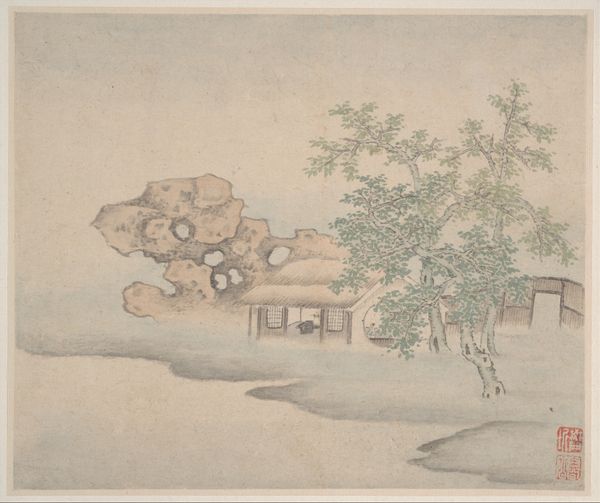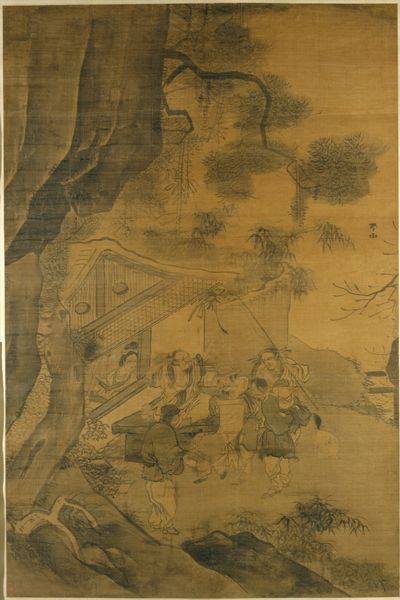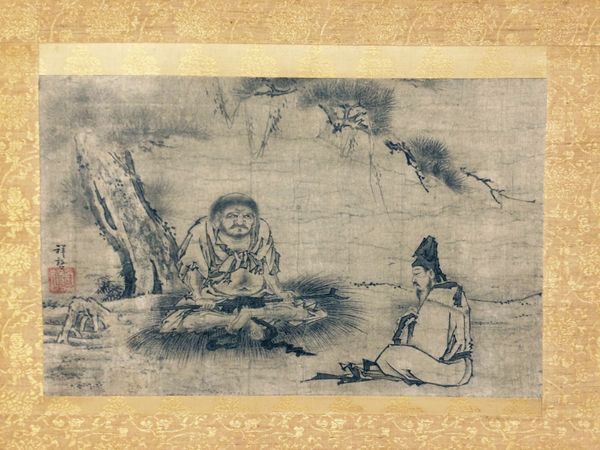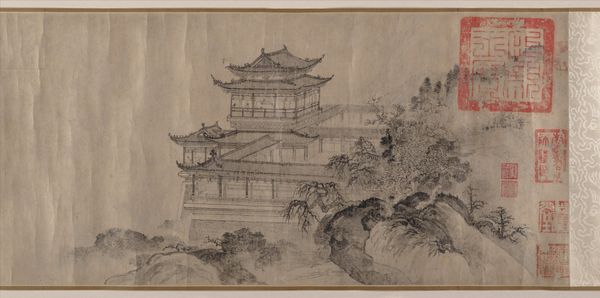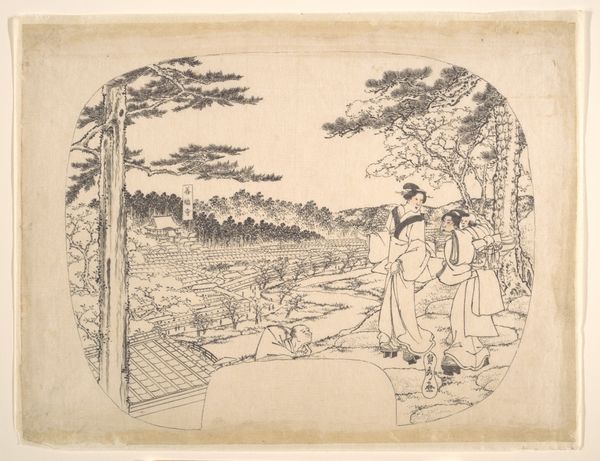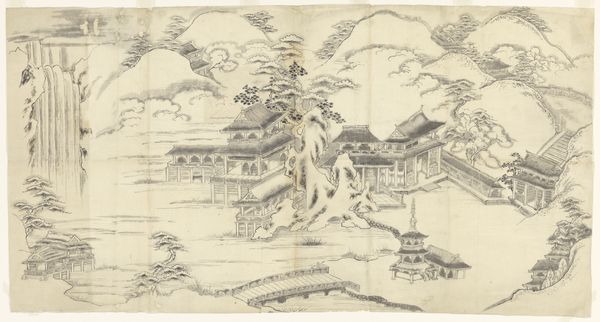
drawing, paper, ink
#
drawing
#
narrative-art
#
asian-art
#
landscape
#
charcoal drawing
#
figuration
#
paper
#
22_ming-dynasty-1368-1644
#
ink
Dimensions: 13 1/2 x 182 1/4 in. (34.3 x 462.9 cm)
Copyright: Public Domain
Editor: This is Qian Gong's "Poets Gathering in the Orchid Pavilion," from 1607, using ink on paper. The monochrome palette really lends an austere and contemplative feeling to the whole piece. There's so much delicate line work creating the figures and landscape... What's most striking to you about it? Curator: It's the very deliberate application of ink, the labor inherent in that process, that immediately grabs me. Think about the artist selecting the paper, grinding the ink, controlling the brushstrokes to depict this idealized gathering. Consider the accessibility of those materials at that time; it speaks volumes about the artist's patronage and the intended audience. What social dynamics might be at play here, controlling access to resources and therefore cultural production? Editor: That's a great point. The ink and paper elevate what could otherwise be just a scene of leisure. The gathering becomes almost a statement. How does the setting contribute to that message? Curator: The landscape itself isn't just backdrop; it's actively shaped and understood through human interaction and intervention. Where did Qian Gong source his pigments? Were his brushes handcrafted? Those are clues to understanding not just the artwork, but the economic and social network that enabled its creation. What level of craftsmanship does the construction of the pavilion suggest? Is that representative of its broader accessibility or place within Ming society? Editor: I never considered the landscape as an active participant before, more as a passive setting. Examining the materials and means of production definitely open up entirely new avenues of interpretation. Curator: Exactly! By looking at the material conditions, we move beyond just admiring the aesthetic to understanding the forces that shaped its creation and its place in society. Editor: This has given me so much to think about, seeing the materials and the crafting of the scene as key elements. Thanks so much!
Comments
No comments
Be the first to comment and join the conversation on the ultimate creative platform.
